
You’re tending to your plants at home or in the garden one day, and you suddenly notice white fuzzy stuff on some of the leaves. A few more days pass, and you see that it continues spreading. You realize that it won’t go away on its own. So what is that white stuff, and more importantly, how do you get rid of it?
First things first, you’re likely dealing with powdery mildew. This is a rather common plant disease and, unlike many other plant diseases, it can be effectively treated with home remedies, especially when caught early. Read on to know more about powdery mildew and learn how to eradicate this pesky plant disease.
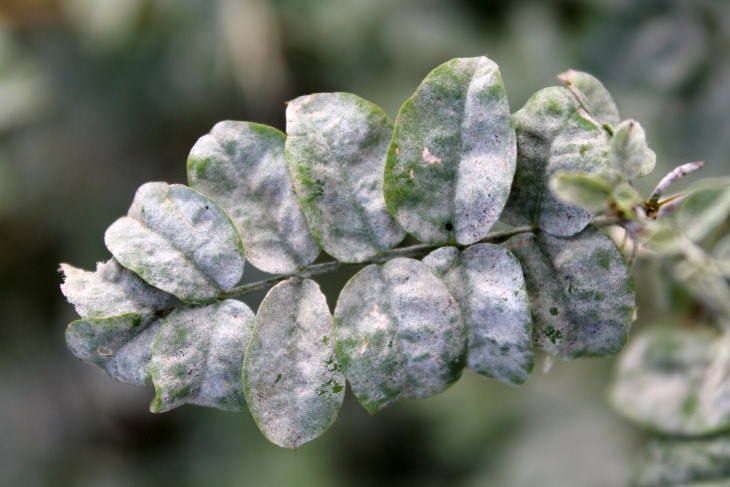
Powdery mildew is one of the most widespread plant diseases. It is an umbrella term for a range of fungal infections that affect both outdoor and indoor plants, with the fungus called Podosphaera xanthii being the most widespread cause of powdery mildew.
This disease is easy to identify: it appears as white fuzz, spots, or dust on the leaves, flowers, fruit, and sometimes stems of the plant. The longer you wait before treating the plant, the higher the risk of the mildew spreading to the entire plant.
The disease is caused by microscopic spores that can be carried to the plant from other plants through watering, the wind, or insect pollinators. The fungal spores that cause powdery mildew can live on the plant or the soil for weeks or months before they start damaging the plant. In their dormant stage, these spores are harmless.
However, when the right conditions arise, the fungus starts spreading and multiplying. High humidity, excessive shade, cool weather, and poor air circulation all create favorable conditions for powdery mildew to thrive. For this reason, powdery mildew is more widespread in late spring to early summer.
Powdery mildew can appear on any plant, but some species are more susceptible to the fungal disease than others. Some of such more vulnerable plants include:

The earlier you catch this pesky fungus, the better. At these early stages, a quick weekly spray of a homemade antifungal solution for a few weeks in a row will be able to completely eradicate the powdery mildew. If your plant is more heavily affected by the fungus, you may need to prune some of the leaves or branches first, and only then proceed with the DIY antifungal treatment.
This antifungal treatment contains no harsh chemicals or pesticides, so you can easily use it on your indoor plants or edible plants like fruit trees, herbs, and vegetables.
Ingredients
1. Combine all the ingredients in a milk jug, shake well, and decant the antifungal solution into a clean spray bottle.
2. Apply the solution generously onto the affected plant. It’s best to do so early in the morning or in the evening, as indirect sunlight combined with this solution may cause the leaves to burn.
3. Repeat on a weekly basis as needed.
Since powdery mildew is very common, there is no 100%-effective way of preventing it. However, you can minimize the chance of getting it by:
We hope you found this article useful, happy planting!
Share these tips with fellow plant lovers
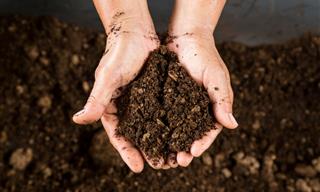
An Express Guide to Plant Fertilizers
There are 4 main types of plant fertilizers, but which one’s best for your garden?
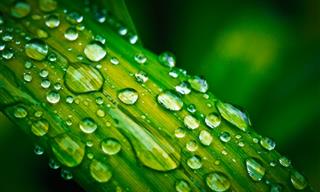
Are Your Houseplants Leaking Water? This Is What It Means
Is it good if your indoor plants are emitting droplets of water? Every houseplant owner ought to know the answer to this one...
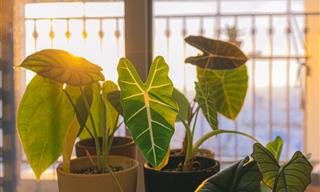
Most Plant Owners Ignore This Crucial Plant Care Detail
Successful houseplant owners always pay close attention to their plants’ light needs. Let us teach you to do just that in this brief but informative guide.

Most Plant Owners Overlook This Insidious Pest
Find out how to spot spider mites, protect your plants from these pesky pests, and treat a plant struggling with a spider mite infestation right here.
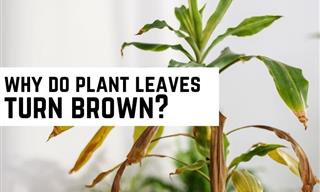
Why Are Your Indoor Plant’s Leaves Turning Brown?
Brown leaves is one of the most worrisome problems of indoor plant enthusiasts. Follow this guide to get to the bottom of the issue.
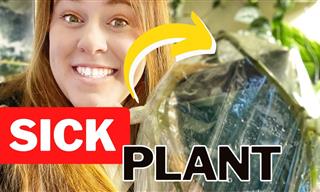 6:33
6:33
Do This to Revive a Drying Houseplant
Whenever one of your houseplants suddenly looks ill, do this trick.

How to Travel in Retirement Without Overspending - 8 Tips
Want to travel after retirement without breaking your budget? Try these tips.

Guide: Did You Know About These Extra Uses?
This collection features the best tips and alternative uses for many of your household items. Each of these posts has a lot of information for alternative uses to make your lives easier.
 8:13
8:13
5 Best Salts to Cook With... and One to Avoid
Here's a guide to help understand which salts to buy, how to use them, and which ones to avoid.

10 Highly Creative Ways to Re-Use Empty Wine Bottles
Do you have empty wine bottles sitting around in your garage? If so, here's what you could do with them.

Making Your Tea in the Microwave Isn’t a Good Idea
Microwaving tea might be convenient, but it isn’t the smartest thing to do. Even science says so.
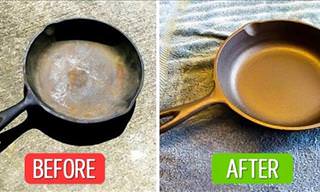
11 Superb Solutions to Turn an Old Looking Item into New
With these secrets, your old-looking items will look brand new once again!

Confused About Home Colors? This Post Clarifies Everything
Choosing the correct colors for each room in your home can be a tricky affair, however this guide will clear everything up for you in an instant.

Surprising Papers You Must Shred to Prevent Identity Theft
If you don't shred these seemingly harmless documents and throw them directly into the trash, you may be subject to identity theft...

8 Ways to Make Your Floors Sparkle Like New!
Not all floors are the same, so you wouldn't expect the same cleaning method to work on them. So here are 8 ways to clean 8 different floor types.

Want to Buy the Freshest Products? Here’s how!
There are basic food products that we consume regularly, so its super important to know how to check their quality. These next tips will help you do just that.
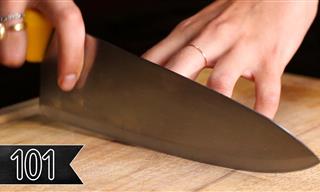 6:34
6:34
Learn to Chop Like a Chef - Useful Tips!
Learn to cut, chop, slice, and dice like a chef!

12 Plants to Keep Your Home Colorful All Winter Long
These houseplants will add color to your house on those cold winter days.

8 Reasons Why You Should Always Have Shower Caps Handy!
Shower caps are a lot more useful than you could ever imagine. Take a look!
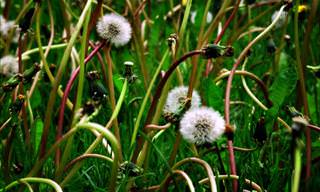
Say Goodbye to Pesky Weeds With This Easy-to-Make Spray!
If you have pesky weeds in your garden or growing on your patio, use these two household ingredients to get rid of them!
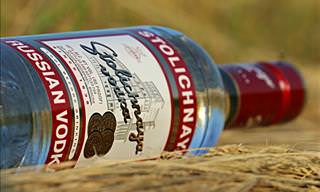
Vodka Has Many More Uses Than You Ever Imagined!
Vodka is not just for use when you need a drink. Here are 16 uses for the Russian beverage that you've undoubtedly never thought of.
 15:06
15:06
How You Can Make a Room Soundproof on the Cheap!
This video will teach you how to create an almost completely soundproof room for the cheapest prices.
 3:43
3:43
The Absolute Easiest Way to French Braid Your Hair
This video tutorial will teach you how to French braid your hair in just a few easy minutes.

Hard Water - 9 Ways It Affects You and Your Home!
Not all water is the same. Hard water can have a negative effect on your budget, home, garden, and even your body.

9 Uses for Your Freezer Besides Keeping Food Frozen
These 10 clever freezer hacks will save you precious time and allow you to make the most efficient use of it.

What Happens to Your Breasts When You Don't Wear a Bra
What happens when you don't wear a bra? Here are 8 health benefits of not wearing a bra you may not know about.

10 Creative Ways to Sneak More Walking Into Your Day
Finding a designated time for walking and exercise can be difficult. Luckily, there are many creative and fun ways to sneak extra steps into your routine!
 7:40
7:40
This Changes Everything You Know About Dishwashers!
These tips will change the way you approach dishwashing forever!

Find Out What Happens to Your Brain When You Complain
It turns out that complaining can have devastating effects on our brains, and after understanding why, you'll want to change your attitude.

8 Ways You're Cooking Chicken Wrong
What's the best way to cook chicken? Get the best flavor out of your chicken by avoiding these 8 common mistakes.

Try These Methods If You Happen to Sweat Excessively
Excessive sweating can be an embarrassing problem, but luckily, there are many different methods to use in order to halt it in its tracks. Discover them here.

Before You Answer That Email, Here are a Few Tips
Here are 9 common situations that require a response and the recommended and less recommended ways to say what you want.

Before Renovating Your Home, Ask Yourself These Questions
Without clear expectations from your home renovation, the project is at risk of failure & overspending. These questions will help you organize your thoughts
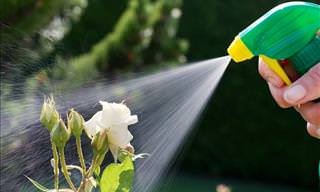
How to Make Organic Pesticides Using Plants in Your Garden
Got some annoying critters in your garden eating all your plants? Try these natural pesticides!
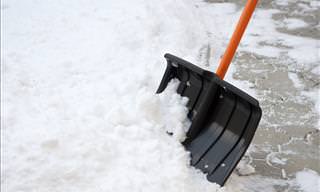 3:54
3:54
Shoveling Snow This Year, Use This Great and Simple Trick
Got a lot of snow to shovel? Here's the easiest and safest way to do so.

11 CLEVER Ways to Repurpose Your Old Toothbrush
Have an old toothbrush lying around the house? Don’t toss it away yet!

Ink Stain Removal Made Easy With 9 Ultimate Home Methods
Don't throw out you ink-stained clothing, instead, try one of these 9 at-home methods of ink removal to revive your garments
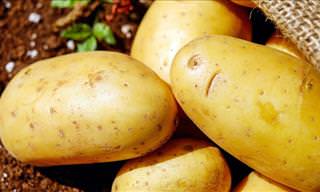
10 Natural Home Remedies EVERYONE Should Know!
Not Feeling well? We recommend that you think outside the box, or in this case outside the medicine cabinet with the following 10 effective natural medicines!
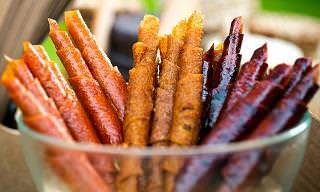
DIY RECIPES: Who Knew Fruit Leathers Were This Much Fun?!
Fruit leathers have to be the most fun way to eat dried fruit ever invented. Here's how to make your own delicious batch.

4 Tests for Hair Health You Can Perform at Home
To avoid an unpleasant surprise about the poor health of your hair, it is recommended to perform the following 4 tests that anyone can do at home in just a few minutes.
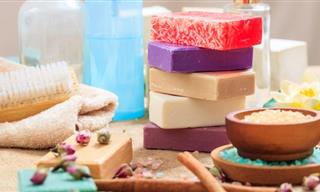
Best Soaps for Different Skin Types: A Science-Backed Guide
Our goal is a scientific yet easy-to-understand overview, with real examples of recommended face and body soaps for each skin type.
 2:01
2:01
Why Pouring Beer Wrong Can Upset Your Stomach
Do you always feel bloated after drinking beer? There's a way to prevent this - all you need is a regular glass and this pouring technique...

Learn to Prevent and Clear This Pest From Your Cupboards
So what exactly should you do if you’re facing the Indian Meal Moth in your home, and how can you prevent its appearance?
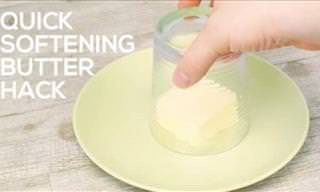
Solve 18 Cooking and Food Storage Problems With These Tips
These 18 food tips will teach you how to prevent food from spoiling and will show you how to save time and effort in preparing certain foods
 5:03
5:03
24 Smart Things to do With Your Clothes Hangers
There are so many things you can do with a good old clothes hanger. Here's 24 of them!
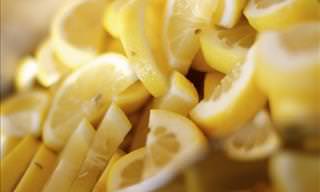
Lemons in the Oven? Read This Article to Find Out Why
Sick of mosquitoes and flies visiting your house? This surprising method will help you get rid of them effortlessly using lemons and an oven!

Steer Clear of These Mistakes to Keep Furniture As New
In this article, we list some of the most common furniture cleaning mistakes that could potentially ruin your sofa, wood and other furniture
To enable your Ad-Free Subscription, please fill the fields below
Your subscription was successful, now you can enjoy an ad-free experience!! Note: To make sure you get no ads, please make sure to log in to your account. If you are logged in already, then refresh the page. The subscription can be cancelled at any time.


